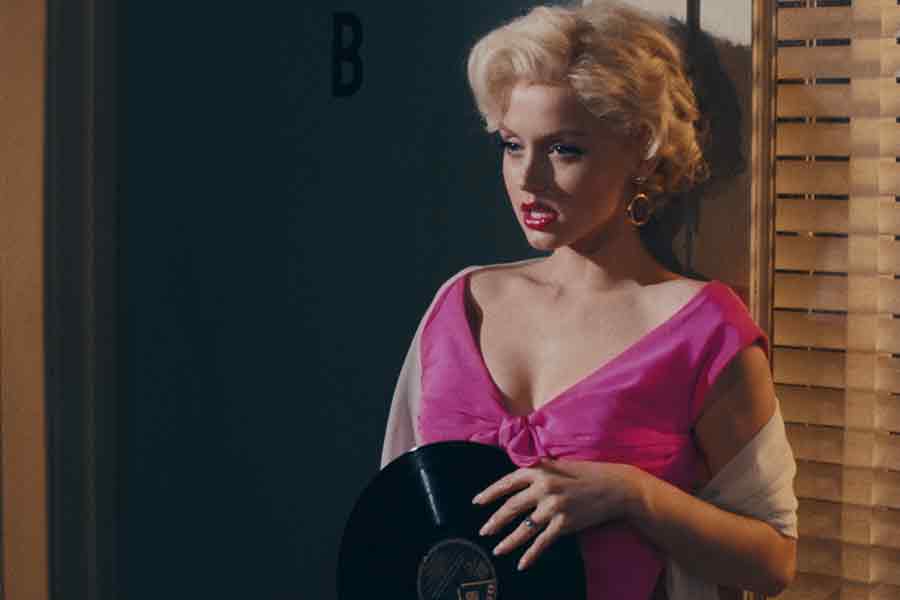
Netflix’s Blonde Review
Since her rise to fame in the early 50s, Marilyn Monroe has remained America’s most prominent sex symbol. From her luminous blonde hair to her memorable white dress that graced the screens in The Seven Year Itch, audiences, most notably men have not been able to get her out of their heads. Since her passing in 1962, many have dissected Marilyn further and have aimed to revere her as a symbol for mental health awareness instead of reducing her to a trivial sex object.
While her story is fascinating and her mental well-being absolutely affected her on and off screen, many fail to realize that once again, pigeonholing her as the “doomed mentally ill starlet” is essentially just as damaging as those who view her as nothing but a piece of meat.
This is the category Andrew Dominik’s new film Blonde falls into. Not a deep dive into the true psyche and three-dimensionality of Norma Jeane Baker and her persona of Marilyn Monroe but instead an exploitative fetishization showcasing only the actress’s lowest parts in her life and minimizing her agency in a film meant to explore all aspects of her career and personality.
The film stars Cuban actress Ana De Armas as Norma Jeane and though she spends most of the film screaming, crying, or pleading with men not to hurt her, De Armas delivers a varied performance despite the script giving her little to work with. Some critics have complained about De Armas’s accent slipping through in a few scenes and how her Hispanic heritage further separates her from the all-American beauty queen. Of course, no one questions the underlying racism in this perspective and many again forget that actors (most prominently British actors)with accents play Americans all the time and no eyebrows are raised when their accent shows up in select lines.
Besides De Armas, there aren’t many notable performances that come to mind especially because this film loves to introduce characters, have them serve their relevance in relation to the main character and then never be seen on screen again, or be brought up 30 minutes later in this film’s unnecessary almost 3 hour runtime. Even though the film features other acclaimed faces Adrien Brody as Arthur Miller and Bobby Cannavale as Joe DiMaggio they really only exist in the story to hurt or fail to help Marilyn. The majority of the time Marilyn is interacting with these men she’s referring to them as “daddy” in order not so subtly to refine and expand her daddy issues but instead is perceived as once again nothing but suggestive sexual language coming from the country’s sexiest woman.
The film loves to remind you of this, as De Armas spends about 10 minutes of the film completely and unnecessarily topless making viewers feel like they’re watching a Game of Thrones episode instead of a psychologically engaging biopic peeling back the multiple layers of this extraordinary woman. “Biopic” is another term used to describe this film which is quite strange when considering Blonde is based on the novel of the same name by Joyce Carol Oates. Oates says herself that her novel is to be revered as a work of fiction despite deriving events from the actress’s real life.
When regarding the movie she claimed it was “a brilliant work of cinematic art [that’s]obviously not for everyone.” This “not for everyone” take might seem objectively arbitrary and could be applied to many other films but as Youtuber and film critic Karsten Runquist noted in his review of the film “something making me too uncomfortable does not mean it’s a good movie”.
Blonde’s exploitative approach to the multifaceted story of Marilyn Monroe ultimately fails its subject matter by highlighting her abuses rather than her successes. Very few scenes are dedicated to showcasing Monroe’s impeccable acting skills and every rare moment that it does it ends with her crying or cuts to a flashback of abuse that penetrates the moment. At times, the film splices in fleeting moments where you think something actually profound is going to be said or done-and there are a few shots in this movie that convey depth-most significantly the scene from the trailer where Norma Jeane is seen crying in her dressing room begging for “her” (talking about Marilyn) not to abandon her. The camera then pans up into the mirror, revealing Norma Jeane has now disappeared underneath the smiling reflection of Marilyn. This haunting shot was arguably one of the main indicators that this film was going to offer a completely fresh and explorative deconstruction of Marilyn as a figure and Norma Jeane as a person.
Instead, because of the misguided direction of Dominick, and the troubling source material from Oates, what is witnessed on screen is a conglomerate of abuse fetishization, undeveloped motives and overall themes, and a complete lack of respect for the legendary actress who died too young. This movie certainly does make audiences uncomfortable-but in all the wrong ways.
The post Blonde is Not Nearly as Cinematically Artistic as it May Claim-It’s Actually Quite Repulsive appeared first on Pop Culture Press, part of the Pop Culture Madness Network.